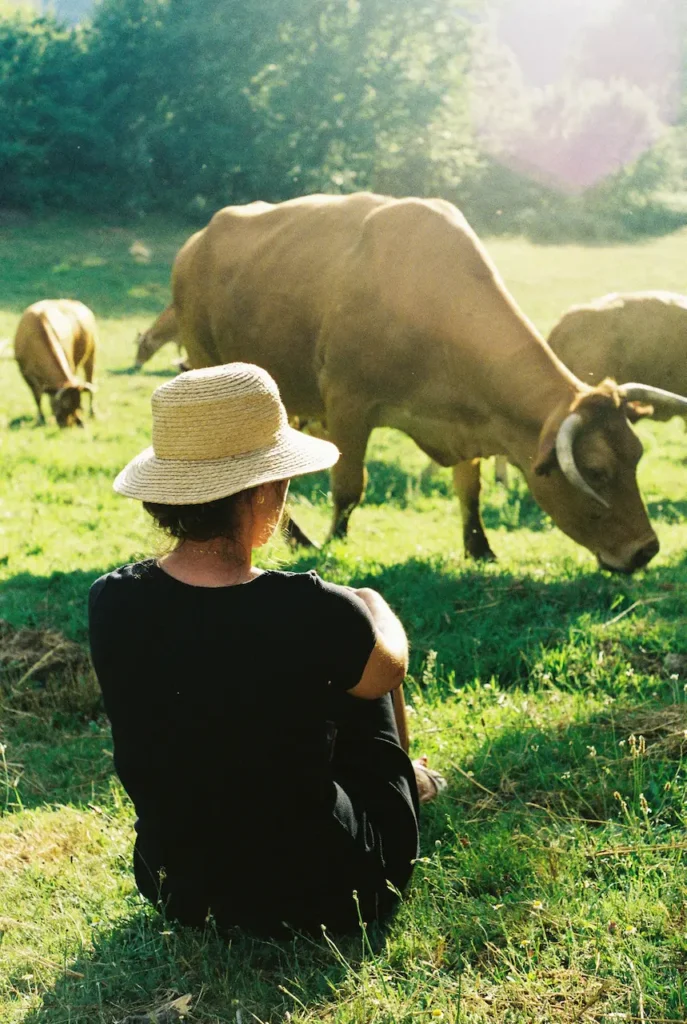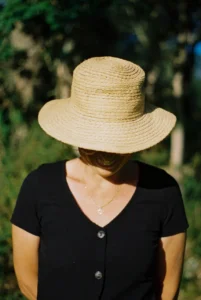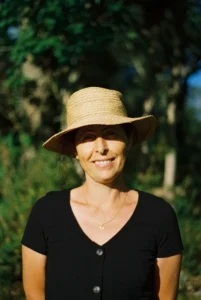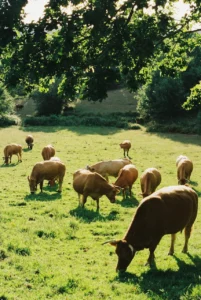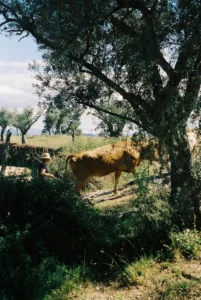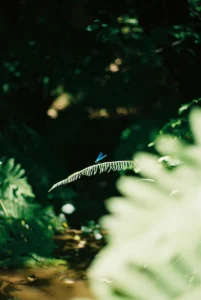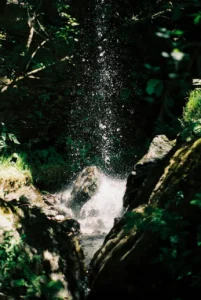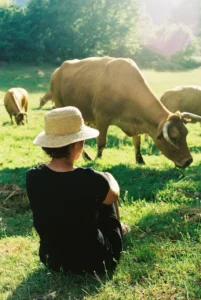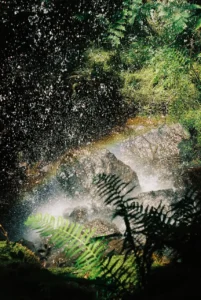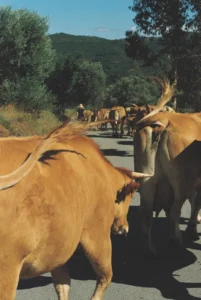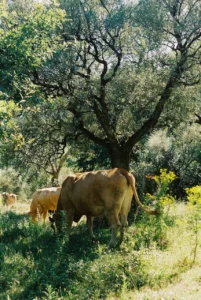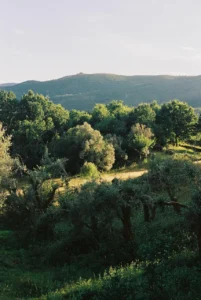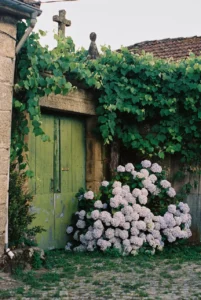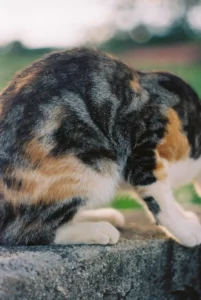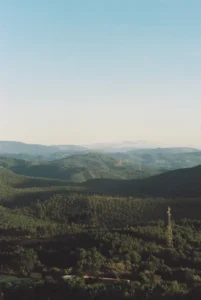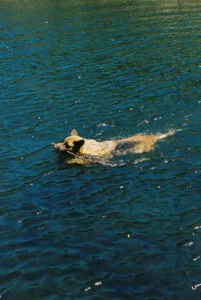Lithium mining in the Barroso and the EU energy transition’s green sacrifice zones
In the northeast of Portugal, tucked within the folds of the mountainous region of Trás-os-Montes lies the rural village of Covas do Barroso. The air is fresh here, and the landscape is green, dotted with small farms, stone cottages, and terraces overflowing with each season’s bounty: earth filled with carrots and potatoes, crisp vines hanging heavy with sweet peas, the smell of healthy soil and manure. Oak, pine, and chestnut trees border the highland meadows where the cows graze, glowing orange in the afternoon light, playing their part in a wider tradition millennia in the making.
In 2018, the Barroso was classified as a Globally Important World Agricultural Heritage System for the region’s unique agricultural traditions, rich biodiversity, and cultural identity. And unique it is. In the Barroso, we still find common lands, known as the baldios, owned and collectively managed by the community. We find an ancient irrigation system that ensures water is distributed equitably among villagers. We’re familiar with these stories: communities with “idyllic ways of life” featured in documentary series and travel blogs, celebrated and sometimes romanticized from afar by those in larger towns and cities.
What happens when that value is threatened in favor of something others deem more valuable?
In 2021, unknown to the community of Covas or the people of Portugal, the Portuguese government visited the Canada Minerals Conference to begin strategically marketing one of the world’s most coveted natural resources: lithium. The lithium in question lies deep in the “Globally Important” pastoral system in the green mountains of the Barroso. Despite the UNESCO World Heritage Convention’s 2013 “no-go” commitment– that calls on nations and corporations to protect World Heritage sites from harmful industrial activities and large-scale development projects.

Lithium—a metal used in the production of batteries for electric vehicles and renewable energy storage—is key to supporting the European Union’s energy transition towards carbon neutrality. Portugal’s lithium is also integral to the EU’s Critical Raw Materials Act, which has set a target that at least ten percent of Europe’s raw materials should come from local supplies within the EU. Following the state’s push to promote Portugal’s lithium resources and attract foreign investment, the Barroso Lithium Project—an open-pit mine led by the British multinational Savannah Resources—was born.
Since then, the Barroso has found itself at the center of the paradoxical narrative surrounding the so-called “clean, green, just” energy transition. With open-pit mining’s track record of contaminating water, polluting air, and destroying biodiversity, what does it mean to confront the existential threat of climate catastrophe by forcing other ecologies and communities into their own micro-disasters and crises?
This is a pattern that feels dizzyingly cyclical— the rebranding of a process that activists and academics recognize is grounded in the same extractive logic that fueled the climate crisis in the first place. As the narrative around lithium in Barroso obscures deeper questions around the trajectory of green extractivism, we must ask: where exactly are we headed, and what are we willing to sacrifice?

Verde é o Barroso Green is the Barroso
Aida Fernandes taps the hindquarters of one of her cows as she guides them onto a road that leads to a lush, sloping meadow for grazing.
Aida’s family has lived in Covas for Generations. She is the President of the Directive Board of the Baldios and has been at the forefront of resistance against the mine since news of it first surfaced seven years ago.
Aida and many of her neighbors have been thrust into a tumultuous new reality, with the impacts already being felt. Reports indicate that Savannah Resources has employed strategic tactics that have eroded rural social ties, exploited vulnerable members of the community, and attempted to undermine the unity of the resistance in the region. Additionally, the project has been marred by government corruption scandals, ongoing legal investigations, allegations of engineered public support, and significant transparency issues.
For Aida, there is one tactic she sees as the most difficult to accept.
“The biggest problem, as I understand it, is the marketing that’s being done at the state level,” Aida shares. “They can’t tell us lies and hope that we agree with them. It’s one thing to say, ‘This is how it is. This is what’s going to happen, whether you agree with it or not.’ It’s another thing when you know what the reality of it will be, and they’re fooling you about it. I can’t accept something like that. It’s on prime time like it’s the greatest truth of all that if you drive an electric car, you’re saving the world. Or you drive a green electric car and you open up a new green forest. No, a new electric car is created and a forest is destroyed…”
Her frustration is valid. From poisoned rivers in sacred Tibetan grasslands to protests from the Paiute-Shoshone tribe in Nevada, the impacts of the “clean” energy transition on vulnerable local and indigenous communities have been well-documented. Within these marketing campaigns and the larger narrative for the Green Energy Economy, there remains no acknowledgment by governments and companies of the fact that communities are being offered up unjustly as solutions to problems they did not create. In the process, giving up the lifestyles, traditions, culture, and ecologies central to their very existence.
Equipped with the right language, we can examine the reality of how these extractive processes unfold, and strip away the illusion of “clean” and “green” to speak plainly about what is at stake.
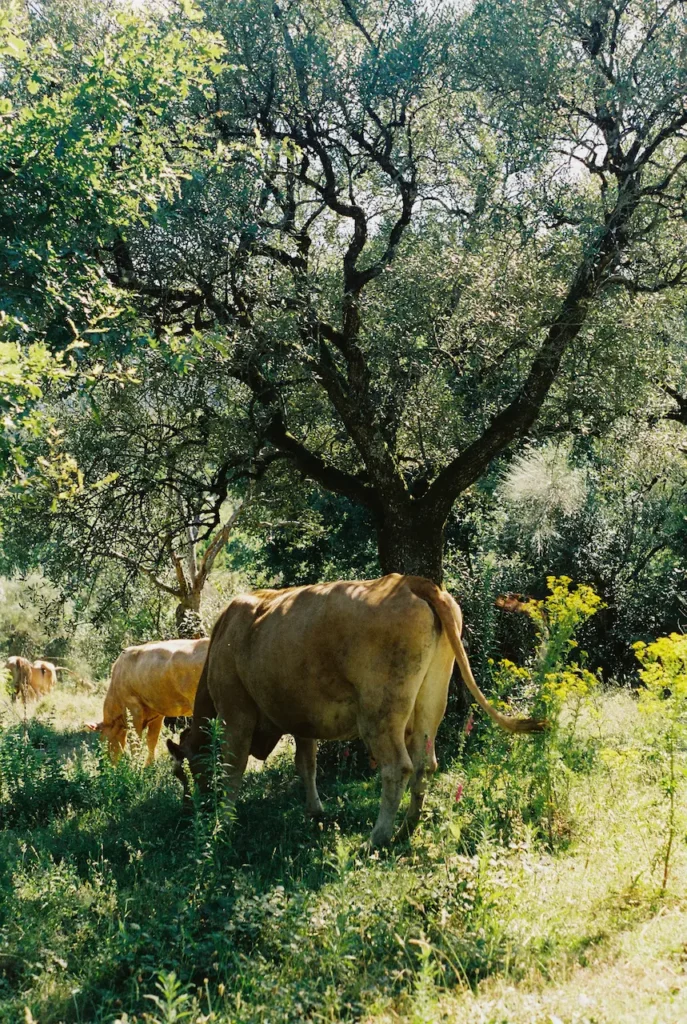
Green Sacrifice Zones
In environmental justice discourse, the term “green sacrifice zones” has been used to describe areas disproportionately burdened by environmental degradation and exploitation, often justified in the name of advancing green energy or sustainable development. The concept draws from the broader term “sacrifice zone,” which dates back to Cold War-era discussions about areas devastated by industrial activities.
Sacrifice is a tricky human concept. At its core, it is a decision based on the prioritisation of competing values, the act of deciding to give up something of value for the sake of something greater or the benefit of others. Leaving sacrifice out of the narrative silences the communities and ecologies at stake and obscures the reality of what will be lost.
Sitting in the grass beneath an oak tree, Aida looks out on the now thriving landscape that was once blackened and devastated by a fire that swept through the north of Portugal in 2010.
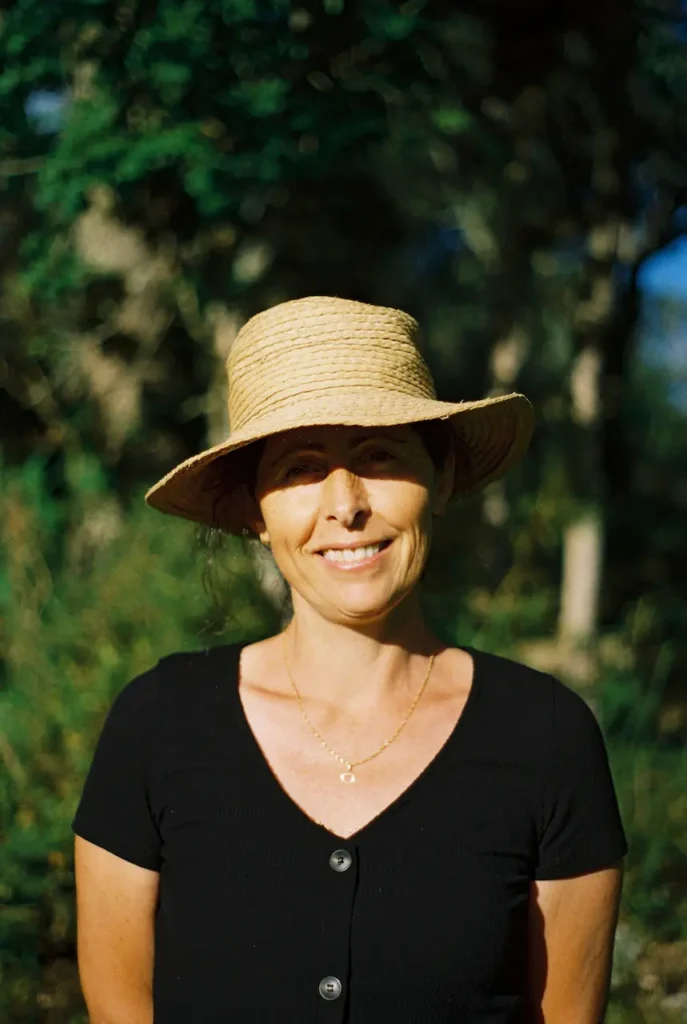
“In the first years after the fire, we cleaned everything, and a natural regeneration began. Everything we see here grew naturally.” Aida says, nodding toward the stretch of green and the dense forest in front of her.
It seems miraculous to imagine that not so long ago the shades of green were charred black, the smell of fresh water and rich soil replaced by burnt wood. But this bounce-back is not a miracle. Cultivating a landscape so abundant requires a sophisticated system, shaped by processes honed through intergenerational wisdom.
What is ordinary and intuitive for Aida is the present iteration of an ancient lineage of knowledge—knowledge that ties into the Barroso’s role as a biodiversity and climate stabilisation hotspot. The region is crucial for pollinators and insects—no small thing considering the current 75% loss of flying insect biomass in Germany, France, and other European countries.
“It’s a cycle that repeats itself, the fluctuations in irrigation, the sowing of the crops…The reason we’ve been recognized as a World Agricultural Heritage Region is because we know how to work the soil. People have a connection to the earth, so the attempt is to treat it well to get something back.”
However, considering that soil is the planet’s largest terrestrial carbon sink, and with recent estimates placing the global loss of ecosystem services due to land degradation at between US$ 6.3 and 10.6 trillion annually, the notion of sacrificing healthy ecosystems and sustainable ways of life starts to unravel the “clean” and “green” narrative.
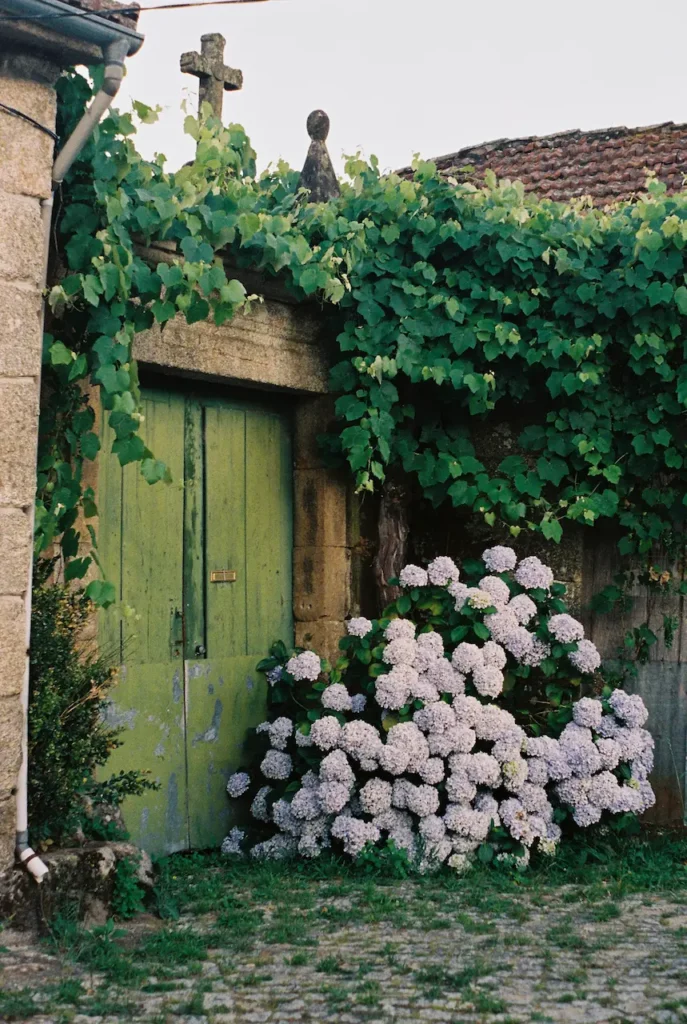
In the case of the “Globally Important” Barroso, we must ask ourselves: What is the value of ancient wisdom that understands how to cultivate increasingly rare and vital soil? What are we sacrificing by adopting one notion of value over another?
Is it ethical to sacrifice local ecosystems and livelihoods to maintain the pace of large-scale production and consumption? What happens when the lithium is out of the earth, the cars are made, and the green mountains of Covas are razed to the ground? Where does this logic end? These are the questions we must bring to the forefront of the conversation to shape our societies according to the values of our choosing.
Aida stands up to bring the herd back to the barn. Apart from the birds, the hum of the insects flying, and the rhythmic chewing of her cows, the landscape is quiet, the afternoon peaceful. It’s difficult to imagine what she feels, looking out onto her home, still intact yet deeply threatened. Sitting out in the meadow with the late afternoon light coming through the trees, it is even more difficult to imagine anything greener than the Barroso itself. In this fresh air where water runs clean and plenty and the soil continues to give back, Aida can only explain to so many people what is at stake.
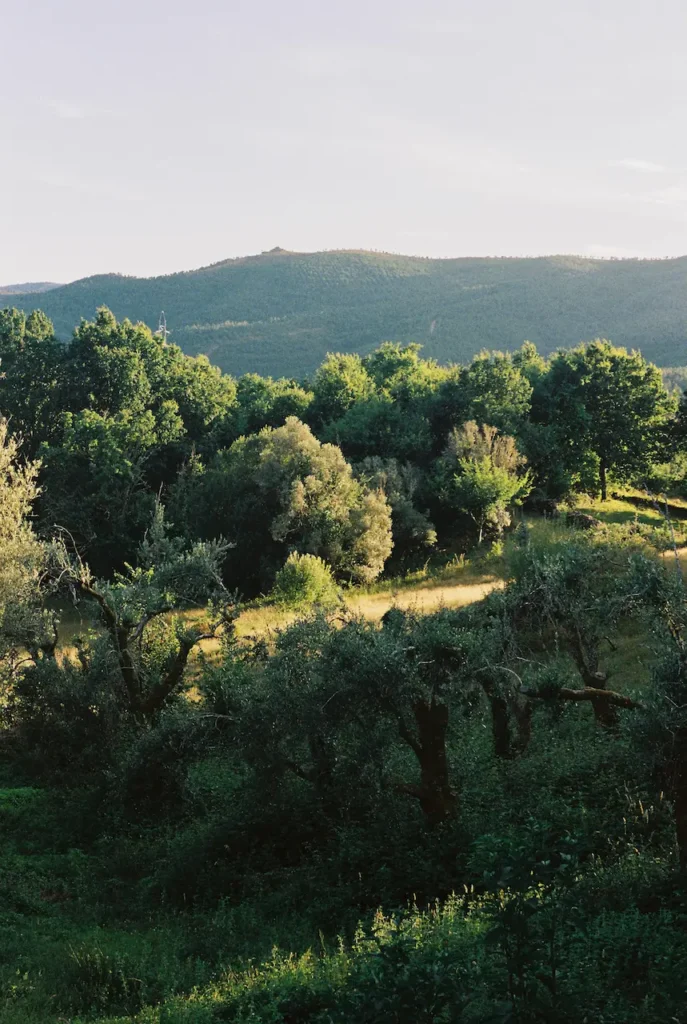
“We don’t accept it. But when the world ends, we’re the ones to blame? We are talking about 10 to 12 years of mining. So, after twelve years, who is going to save the Earth when we don’t have lithium here anymore? And us? What will there be for us?”
